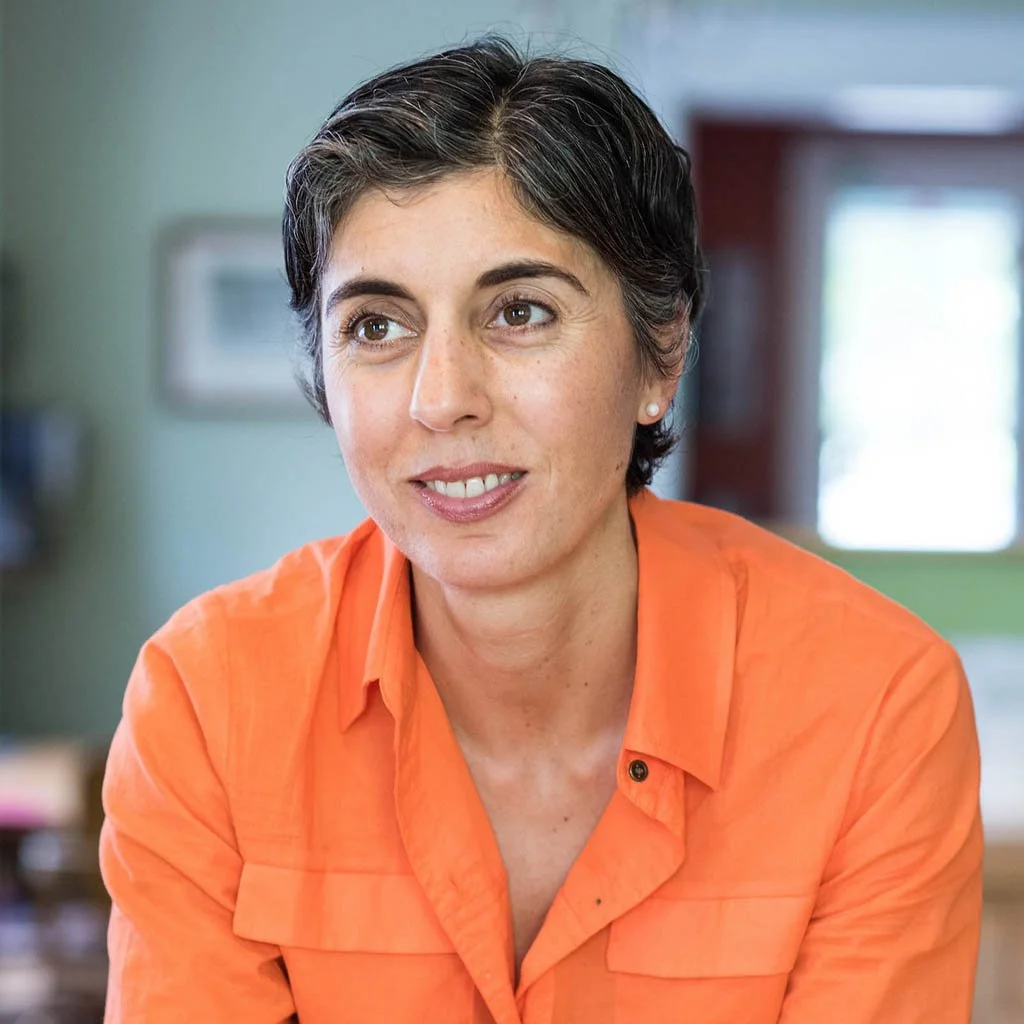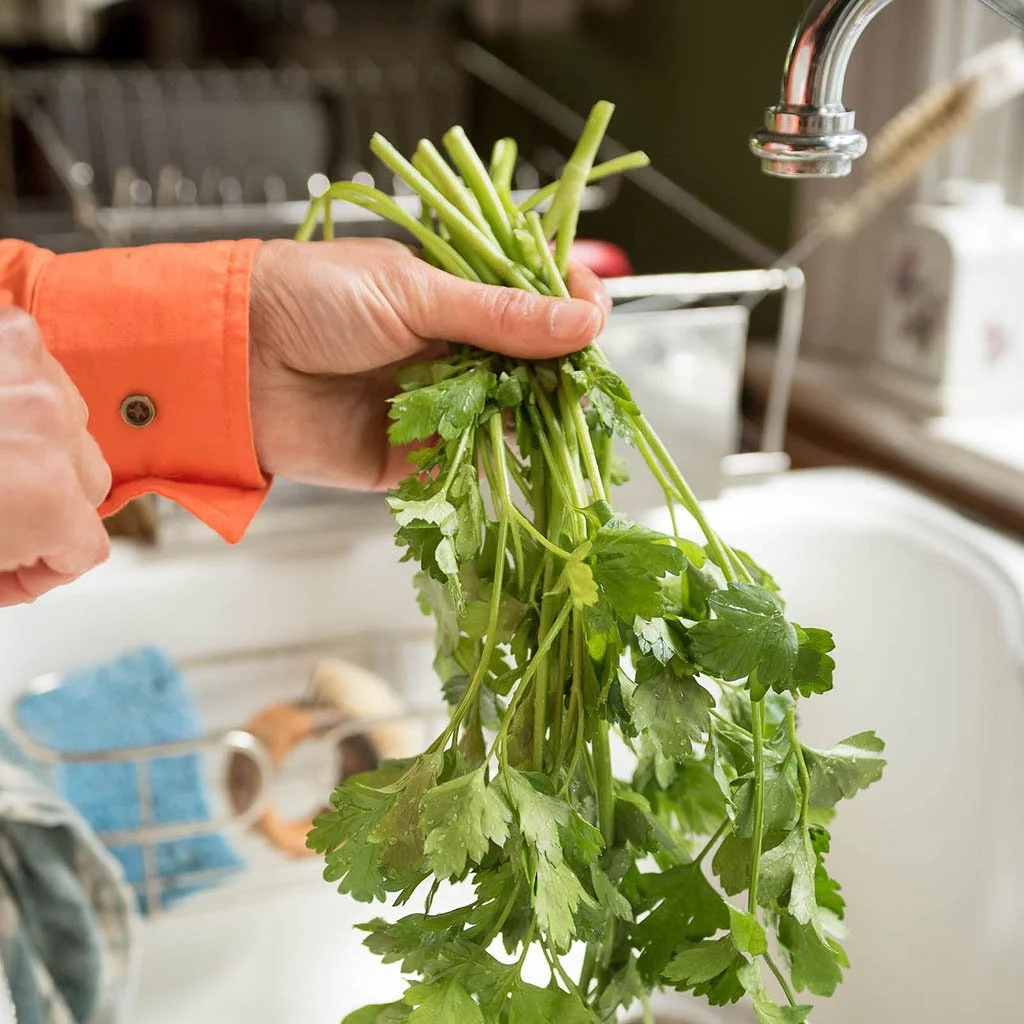RECLAIMING THE KITCHEN
Author Katherine Deumling
Words by Katherine Deumling. Photos by Shawn Linehan.
Katherine Deumling was a force of nature and a beloved member of the Portland culinary and farming community. She was the head of Slow Food Portland from 2003-2008, and created a philosophy of cooking she called "Cook with What You Have," which turned into a website containing hundreds of recipes geared towards eaters who buy CSA shares. She taught classes at local colleges and institutions on how to easily cook healthy and delicious meals. Katherine passed away in July of 2022. Her vibrant, sparkling, quick-witted personality are missed.
—Shawn Linehan
HAVE MORE BY USING WHAT YOU HAVE
Scrappy. Feeding ourselves day-to-day is probably more scrappy than beautiful. I’ve developed a love for the randomness and constraints of this kind of daily cooking. We would collectively cook more, waste less, and have much more fun with the business of feeding ourselves if we were guided by and permitted to cook with what we have. That half bunch of cilantro that’s about to go south? That stale piece of bread? Add an egg or a cup of beans to the lineup, and several kinds of meals are possible. Maybe you have hot sauce in the fridge, and then you really have it made.
Using up this and that to make something satisfying makes me happy. I get a little gleam in my eye when the bits and pieces nourish those around my table. And don’t get me wrong—beautiful, plump produce or a gorgeous piece of fish make me happy too. But I wince a little when I read recipes that talk about needing to pick out the finest, freshest, heavy-for-its-size-produce for a particular recipe, or have epic poem-length instructions. A little context for the recipe and a few variations are useful, but much more than that makes me quickly look elsewhere for inspiration.
But where does one get the confidence, the permission, the guidance to cook this way? Some of us were raised in scrappy households. My mother is an excellent and resourceful cook who rarely uses recipes. She also suffered from debilitating migraines and was out of commission for several days every month when I was young. My dad was a lousy cook. I remember him making a particularly leaden version of my mother’s Eierkuchen (German version of crepes) when my mother was down for the count so I started cooking for my three brothers and father during these times.
When you’re hungry, perfection is beside the point (though the Eierkuchen were inedible!). I’m sure most of what I made was fine, but certainly not great. My family ate and endured my phase of overdoing the black pepper in everything I made. But I was given free rein. My mother’s example—given our rural West German upbringing near Wissen an der Sieg, far from grocery stores and convenience foods—and my love of eating turned me into the creative cook I am today. Some people seem to come by this confidence and creativity without the parental example and are just good at looking in the fridge and going for it.
Use that cilantro!
LESS MEASURING, FEWER DISHES
Many of us, though, are afraid to veer from the recipe, and the recipe never calls for wilted cilantro and stale bread (unless you have Tamar Adler’s excellent book An Everlasting Meal). Recipes have their place, and I love reading them and getting inspired and I even follow one every once in a while. But the ease and flow and creativity that comes from actually cooking with what you happen to have on hand is a different thing. It’s quicker—no constant checking of the recipe while the garlic threatens to burn or the pasta boils over. There is less measuring, fewer dishes to wash. To get there, we probably need to follow a recipe or a basic set of instructions a few times, but little by little you’ll glance at it less, start changing it more. If we really can cook in this creative yet simple way we don’t have to resort to the expense and excess packaging of takeout, or the tedium of meal planning.
I do like to be prepared so that I can pull a meal together in twenty minutes. That might mean having a spicy tahini sauce already made, some cooked beans or leftover rice (always cook more than you need!) in the fridge, tender herbs washed and ready to go, a few hard-boiled eggs and a jar of toasted sunflower seeds. A pantry stocked with some basics is a must. Beyond the staples, the things that really make a meal come together and taste good for me are things like fresh ginger, soy sauce, miso, fish sauce, hot sauce, vinegars, lemons, capers, and mayo.
It takes practice to use these ingredients and put something on the table every night. But since we have to (get to!) eat every day we have ample opportunity. Make a short list of types of dishes you like—fried rice, soup, curry, salads, burritos etc. Then make one of them, maybe fried rice. (Always a winner in my household.) I usually have a high ratio of veg and herbs to rice, and, if I have time I add lots of fresh garlic and ginger to start, and soy and fish sauce to finish. The mantra is high heat, big pan, plenty of oil. Start with fairly finely chopped veg, then add garlic and ginger, then rice (leftover, not fresh); maybe scramble a few eggs in the pan and mix in, then soy and/or fish sauce, hot sauce, and some mint or cilantro to finish, if you have it. Voila!
So, next time you’re at the store get: fresh herbs—I find cilantro and parsley the most versatile, but get whatever you like; scallions or red onion—they’re bright, sharp, pretty, and a great accent raw or cooked to many things; a lemon or two, and a lime— both juice and zest add lots of dimension to both savory and sweet things; and seeds and nuts—sunflower, pumpkin, almonds, walnuts, peanuts, etc.
Eat your veg.
USE THE STUFF YOU BOUGHT
Use herbs like vegetables, i.e. in larger quantities than recipes typically tell you. Stir lots into scrambled eggs or a frittata. Mix a bunch of finely chopped parsley with some garlic, olive oil, and lemon juice and you have an Italian salsa verde that makes everything better.
Lemon juice will give tahini and garlic the lift it needs to make a sauce, to which you could add lots of herbs or hot sauce, or just some ground cumin and hot pepper and enough cold water to get the right consistency.
Toast seeds and nuts; they’re so much better that way. Add to salads, use instead of croutons in soups, or process into pestos or other sauces.
And make sure you have some vegetables, grains, beans, lentils, pastas, eggs, cheese, or whatever your basics are. Meat and fish in the freezer, plus extra broth. Leftover cooked grains and beans, butter, and bread crumbs are also useful.
I often say that a big skillet, some olive oil, and salt is all you need to make most anything taste good. Sometimes that’s true but sometimes soy sauce and fish sauce, sesame oil, and ginger will make things come together. . . or lemon, anchovies, and capers. All these condiments and seasonings are shelf stable and pretty affordable to buy and use. Constraints—no time to run to the store, a few random bits in the fridge—are really the mother of creativity.
To me, this way of cooking feels like democratizing cooking and eating—more transparency, less fear, and a greater sense of our community, whether that’s your favorite grocery store clerk or farmer or the people with whom you eat. Cooking like this even lends itself to last-minute dinner invitations. Recently, the ever-present container of leftover rice expanded a pot of beans into a rice and bean chili of sorts, with lots of cumin, coriander, and hot chili, finished with the also ever-present half-bunch of cilantro. Six of us were fed. I wouldn’t call it “entertaining,” but simply sharing a meal. No need for appetizers or dessert or drinks. Invite a neighbor over at the last minute because you made plenty of soup. No need for said neighbor to bring anything, just come and eat!
Fresh green onions.
Super special thanks to Shawn Linehan.




